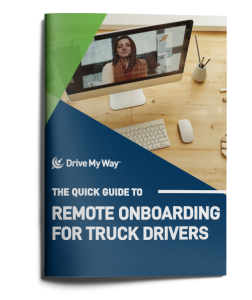
“Know your audience” is one of the key mantras of the business world now, regardless of which industry or market one is in. Truck drivers are the lifeblood of the transportation industry. They literally connect the industry’s different players together through the mobile nature of their workers.
Knowing more about the average truck driver and their work and lifestyle can help employers recruit and retain workers. It will also help them connect and empathize with drivers on a personal level and foster a more positive work environment. A positive relationship between management and drivers feels good, but also leads to more productivity, motivation, and loyalty from drivers. Here are 7 truck driver stats every employer needs to know.
1. There are 3.5 million truck drivers in the US.
Even though this is a very large industry and workforce, there is a considerable driver shortage. Out of these, only about 1.6 million are heavy-duty tractor trailer drivers. To complicate matters, driver turnover is significantly high. Treat your drivers well and remember that the labor is not easily replaceable.
Only about 6% of all truck drivers are women (about 200,000), although this number is on the rise.
This remains a largely untapped market for potential drivers and is a contributor to the driver shortage.
2. The average truck driver age is 49.
Knowing the demographic and social profile of drivers will help you connect with their interests, values, and lifestyle.
The average truck driver is middle-aged and been through plenty of other jobs and work experience. Treat them with respect like mature professionals, not rookies.
The average driver is also most likely married or has been married in the past. They most likely have children. Family time is an important factor that drivers consider when deciding who to work for.
3. The average driver workweek is 70 hours in an 8-day period.
This should give some idea of how taxing the driver work schedule is. Seventy hours is much higher than the 44-hour workweek of the average American.
Additionally, the average driver works 8 days before taking a day off. This means an average of eight days without seeing family, unless there are special benefits with companies offer.
Providing a more appealing working schedule package will help differentiate your company from the rest of the crowd.
4. The average number of miles logged by a driver in a single year is 100,000 miles.
This is another staggering example of truck driver stats that you need to know. Miles logged paints a picture of how much time a driver spends on the road in just one year. Being behind the wheel for such a long time has implications for driver lifestyle and health.
Investing in cabin amenities for drivers will go a long way in appealing to their needs in the truck itself.
While not everything can be done behind the wheel, employers can make sure drivers are comfortable with the latest amenities such as ergonomic seating and satellite radio.
5. The average yearly earnings by a driver is $41,000.
This isn’t a very significant number for the tremendous amount of labor put in by truck drivers. There are constant pressures on employers to cut operating costs in the different aspects of the business. Too often, the hit is taken on labor itself. By creating efficiencies in other areas of the business, or cutting costs in other ways, employers can attempt to raise the salary offering for drivers.
Offering better compensation for drivers will significantly attract them to your company more than the competition.
Due to the driver shortage, drivers will have no hesitation going to another company for work if they feel like they are not being compensated as well as they deserve.
6. The projected employment growth for tractor-trailer drivers from 2016-2026 is 6%.
The truck driver stats on job outlook over the next 10 years is comparable to most other occupations. However, it remains to be seen if this will cover the increase in the demand for goods transported over the roads.
It is likely that the driver shortage will remain an industry factor for a considerable period of time.
Basically, the growth in drivers may not be higher than the growth in the number of jobs, so make sure you’re doing all you can to attract and retain drivers.
7. The number of nights away from home for the average driver is 240 nights.
That’s almost 2/3 of the year away from home. Considering the age and demographic profile of truck drivers, most of them likely have a family they’d like to spend time with.
Employers can’t change the intrinsic nature of the job, which is that drivers will be on the road and away from home. They can however, offer benefits packages which address the drivers specific home life and schedule needs.
Many companies now offer extended time-off, flexible work schedules, or even offer to have couples travel on the road together. Getting to know your driver’s schedule needs will help you craft a package tailored to their needs and retain them for longer.









.jpg)




